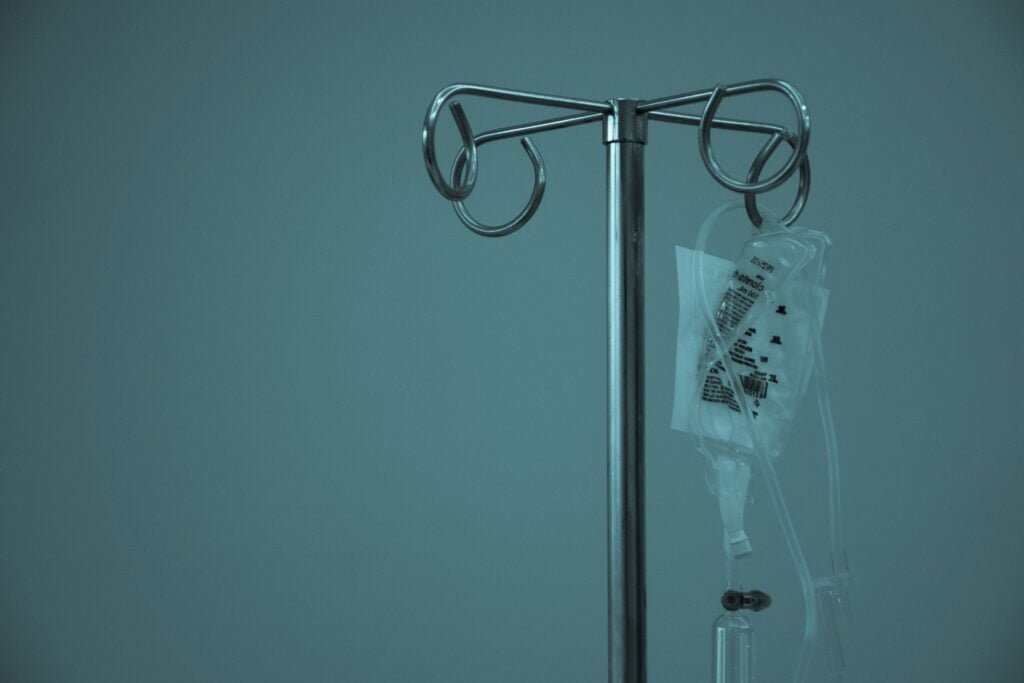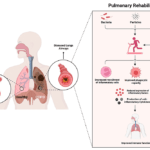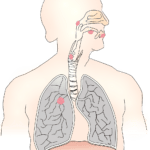
Have you ever wondered just how effective pulmonary rehab really is? With the increasing prevalence of chronic respiratory diseases like COPD and asthma, many individuals are turning to pulmonary rehabilitation programs for help. But does it actually work? In this article, we will explore the success rates of pulmonary rehab and its impact on patients’ overall well-being. Whether you’re considering starting a program or simply curious about its potential benefits, this article will provide you with the information you need to make an informed decision. Pulmonary rehabilitation programs are effective in improving the quality of life for individuals with lung diseases. These programs are designed to help you manage your condition through a combination of exercise training, education, counseling, breathing techniques, nutritional counseling, and psychological support.

Types of Pulmonary Rehabilitation Programs
There are two main types of pulmonary rehabilitation programs: inpatient and outpatient. Inpatient programs are usually offered in a hospital setting and are recommended for individuals who require more intensive care and monitoring. Outpatient programs, on the other hand, are conducted in a clinic or a community-based facility and allow you to attend sessions while still living at home.
Components of a Pulmonary Rehab Program
A comprehensive pulmonary rehabilitation program will typically include the following components:
Exercise Training
Exercise training is a key component of pulmonary rehabilitation and involves activities such as aerobic exercises, strength training, and flexibility exercises. These exercises are tailored to your individual needs and abilities and aim to improve your physical fitness, increase your exercise tolerance, and reduce shortness of breath.
Education and Counseling
Education and counseling sessions are conducted to help you understand your condition better, learn about your medications, and develop strategies for managing your symptoms effectively. These sessions also provide an opportunity for you to ask questions, discuss any concerns you may have, and receive emotional support.
Breathing Techniques
Breathing techniques, such as pursed lip breathing and diaphragmatic breathing, are taught to help you control your breathing and reduce symptoms like shortness of breath. These techniques can be practiced during daily activities to increase your comfort and improve your lung function.
Nutritional Counseling
Proper nutrition plays a vital role in managing lung diseases. Nutritional counseling is provided to help you make healthy food choices and develop a balanced diet plan that supports your overall health and wellbeing.
Psychological Support
Living with a chronic lung disease can take a toll on your emotional wellbeing. Psychological support is an integral part of pulmonary rehabilitation programs, as it helps you cope with the psychological challenges associated with your condition. It may involve individual counseling, support groups, or referral to mental health professionals when necessary.
Benefits of Pulmonary Rehab
Participating in pulmonary rehabilitation programs offers numerous benefits, including:
Improved Lung Function
Pulmonary rehab programs have been shown to improve lung function in individuals with lung diseases. Through a combination of exercise and breathing techniques, you can increase your lung capacity and enhance your ability to oxygenate and ventilate your lungs.
Reduced Shortness of Breath
Shortness of breath is a common symptom experienced by individuals with lung diseases. Pulmonary rehab can help reduce the sensation of breathlessness by improving your overall fitness, teaching you breathing techniques, and providing you with strategies to manage activities while conserving energy.
Increased Exercise Tolerance
Participating in regular exercise training can significantly increase your exercise tolerance. As you engage in physical activities, your body becomes more efficient at using oxygen, leading to improved cardiovascular fitness and endurance.
Better Quality of Life
One of the primary goals of pulmonary rehabilitation is to enhance your overall quality of life. By improving your physical fitness, managing your symptoms, and providing you with the necessary tools to cope with your condition, pulmonary rehab can significantly impact your day-to-day life and overall wellbeing.
Fewer Hospitalizations and Emergency Room Visits
Studies have shown that individuals who participate in pulmonary rehabilitation programs experience fewer hospitalizations and emergency room visits. By empowering you with the knowledge and skills to manage your symptoms and prevent exacerbations, these programs can help reduce the need for acute medical interventions.
Success Rates of Pulmonary Rehab
The success rates of pulmonary rehabilitation programs can vary depending on several factors.
Variability in Success Rates
Success rates can differ between individuals and may be influenced by various factors, including the severity of the lung disease, the individual’s commitment to the program, and their overall health status. It is important to note that pulmonary rehab is a collaborative effort, and the success of the program relies heavily on your active participation and dedication.
Factors Influencing Success
Several factors can influence the success of a pulmonary rehabilitation program. These factors may include the presence of comorbidities (other medical conditions), the individual’s motivation and adherence to the program, the accessibility of transportation to the program site, and the availability of social support networks.
Individualized Rehabilitation Plans
To maximize the success of pulmonary rehab, it is crucial that the program is tailored to meet your specific needs and goals. Individualized rehabilitation plans take into account your unique challenges, preferences, and abilities, ensuring that the program is personalized and effective.

Barriers to Successful Pulmonary Rehab
While pulmonary rehabilitation programs offer significant benefits, there can be barriers that hinder their success.
Access to Programs
Access to pulmonary rehab programs can vary depending on your location and healthcare system. Some individuals may face challenges in finding a program near their home or have limited options available to them. Addressing these access barriers is essential to ensure that everyone who can benefit from pulmonary rehab has the opportunity to participate.
Transportation Issues
Transportation can be a significant barrier for individuals attending outpatient pulmonary rehab programs. Lack of reliable transportation or long travel distances may make it difficult for some individuals to attend sessions regularly. Implementing transportation services or exploring telehealth options can help overcome these barriers.
Lack of Motivation
Motivation plays a crucial role in the success of pulmonary rehabilitation. It can be challenging to stay motivated throughout the program, especially when faced with setbacks or difficulties. Building a support network, setting realistic goals, and finding activities you enjoy can help maintain motivation.
Comorbidity Burden
Having comorbidities, such as heart disease or diabetes, can present additional challenges during pulmonary rehab. Managing multiple conditions simultaneously requires coordinated care and tailored rehabilitation plans to address the unique needs and limitations associated with each condition.
Improvements in Physical Fitness
Engaging in pulmonary rehabilitation can lead to improvements in physical fitness, enabling you to perform daily activities with greater ease and comfort.
Cardiovascular Endurance
Regular aerobic exercise can improve cardiovascular endurance, making your heart and lungs more efficient at delivering oxygen to your muscles. This can enhance your stamina and reduce fatigue, allowing you to engage in activities for longer periods without experiencing excessive shortness of breath.
Muscle Strength and Flexibility
Strength training exercises, such as resistance training and weightlifting, are an integral part of pulmonary rehab. These exercises target specific muscle groups, improving their strength and flexibility. Stronger muscles can support better posture, reduce muscle imbalances, and improve overall mobility.
Balance and Coordination
Pulmonary rehab programs may incorporate exercises that focus on improving balance and coordination. Enhancing these skills can reduce the risk of falls, improve your ability to perform daily tasks, and increase your confidence in your physical abilities.

Emotional and Psychological Benefits
In addition to physical improvements, pulmonary rehabilitation can have a positive impact on your emotional and psychological health.
Reduced Anxiety and Depression
Living with a chronic lung disease can be emotionally challenging. Participating in pulmonary rehab programs can help reduce anxiety and depression symptoms by providing a safe and supportive environment. Education, counseling, and peer support can help you better cope with the emotional aspects of your condition.
Enhanced Self-confidence
As you progress through pulmonary rehab and experience improvements in your physical fitness and overall wellbeing, your self-confidence is likely to increase. Achieving personal milestones, such as walking longer distances or feeling more in control of your symptoms, can boost your self-esteem and enhance your overall outlook on life.
Increased Social Support
Pulmonary rehab programs often provide opportunities for social interaction and support. Connecting with others who are going through similar experiences can create a sense of community and belonging. Sharing challenges, triumphs, and strategies with peers can help you feel less isolated and more supported in your journey.
Long-term Maintenance of Gains
Pulmonary rehab is not a one-time event but rather a lifelong commitment to managing your lung condition and maintaining the gains achieved during the program.
Importance of Continued Exercise
Continuing to engage in regular exercise after completing pulmonary rehab is essential for maintaining the improvements in physical fitness and symptom management. Regular physical activity helps sustain lung health, strengthens muscles, and prevents deconditioning. Your healthcare team can help you develop a long-term exercise plan that fits your preferences and abilities.
Monitoring and Follow-up Care
Regular monitoring and follow-up care are crucial components of long-term maintenance. Your healthcare team will track your progress, adjust your treatment plan as needed, and provide ongoing support and education. Staying connected with your healthcare team will help you address any new challenges or changes in your condition effectively.
Cost-effectiveness of Pulmonary Rehab
While the benefits of pulmonary rehab are significant, it is also essential to consider its cost-effectiveness.
Reductions in Healthcare Costs
Engaging in pulmonary rehab can lead to a decrease in healthcare costs over time. The improved management of symptoms, reduced hospitalizations, and emergency room visits can result in lower healthcare utilization and associated expenses.
Improved Work Productivity
Effective management of your lung condition through pulmonary rehab can also have a positive impact on your work productivity and earning capacity. Improved physical fitness, reduced symptoms, and increased stamina can help you perform your job duties with greater ease and efficiency.
Considerations for Pulmonary Rehab Success
To ensure the success of your pulmonary rehabilitation program, there are several considerations to keep in mind.
Individual Commitment and Engagement
Your active participation and commitment to the program are crucial for its success. Take an active role in your rehabilitation process, ask questions, and voice your concerns. Set realistic goals and work collaboratively with your healthcare team to achieve them.
Collaboration with Healthcare Team
Pulmonary rehab is a collaborative effort between you and your healthcare team. Maintain open communication with your doctors, nurses, respiratory therapists, and other healthcare professionals involved in your care. They will provide guidance, monitor your progress, and help you overcome any barriers you may encounter.
Adherence to Pulmonary Rehab Plans
Adherence to your pulmonary rehab plans, including exercise routines, medications, and lifestyle modifications, is key to achieving the desired outcomes. Follow the recommendations and guidelines provided by your healthcare team, and be consistent in your efforts. Communicate any difficulties or challenges to your healthcare team, as they can often offer solutions and support.
In conclusion, pulmonary rehabilitation programs offer several benefits for individuals with lung diseases. By focusing on exercise training, education and counseling, breathing techniques, nutritional counseling, and psychological support, these programs can improve lung function, reduce breathlessness, increase exercise tolerance, enhance quality of life, and decrease hospitalizations and emergency room visits. While success rates may vary, individualized rehabilitation plans, access to programs, transportation services, and motivation are essential considerations for success. Pulmonary rehab also provides improvements in physical fitness, emotional and psychological health, and long-term maintenance of gains. With cost-effectiveness and commitment from individuals and collaboration with healthcare teams, the benefits of pulmonary rehab can be maximized, leading to improved well-being and overall quality of life.









